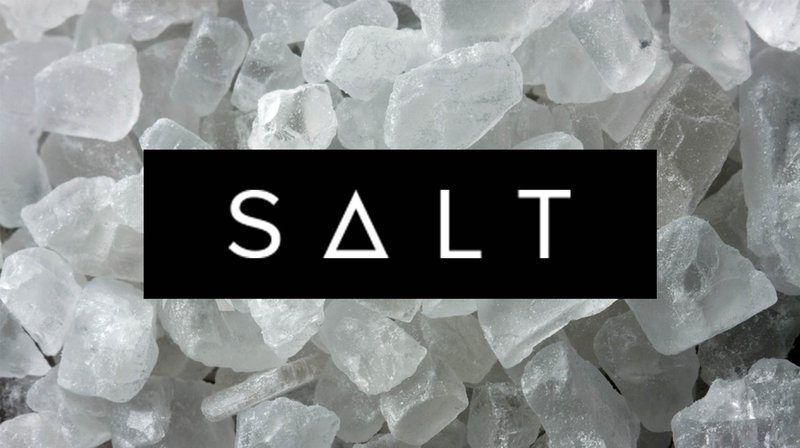SALT Enables Traditional Lending Secured by Cryptocurrency

A new startup in Denver, Colorado has set out to take on the blockchain-based lending market. Secured Automated Lending Technology, or SALT for short, is a membership-based financial enterprise with its eyes set on being recognized as the first lending platform to facilitate loans collateralized by bitcoin and other cryptocurrencies.
Touted as “traditional lending secured by cryptocurrency,” SALT will allow members to leverage assets like bitcoin and ether for loan collateral. This new platform, which will be tethered to Ethereum ERC20 smart contracts, will enable borrowers to tap into “capital on demand” via its ecosystem of lenders. The major value proposition is that it provides a mechanism for supporting the value of investor holdings, while simplifying all aspects of the loan process and leveraging the power of a blockchain-centric lending market.
The following scenario illustrates a typical use case for SALT: imagine if you sold out your entire bitcoin holdings in 2016 for a luxury purchase, only to see the price shoot to the moon in 2017, resulting in a loss of all that you might have gained over the course of that period had you held on to your bitcoins.
With SALT, an investor who has collateral they wish to retain can leverage their crypto-assets for a loan. This allows them to maintain a long position with their assets while creating a greater set of options with their taxes.
The SALT loan process consists of four primary steps:
-
Loan Creation: a borrower sets up a membership account and then forwards their collateral to the SALT Oracle Wallet. This is a multi-signature blockchain wallet that functions as a repository for collateral while automatically managing the lending terms.
-
The loan funds, once approved, are transferred to the borrower’s bank account.
-
Loan Repayment: a borrower makes timely, periodic payments to the lender.
-
Loan Completion: upon repayment of the loan, the borrower will have their collateral returned.
SALT doesn’t perform credit checks on borrowers but does conduct full Anti-money Laundering (AML) and Know Your Customer (KYC) verification checks. Loans made via the platform are denominated in and repaid with traditional currencies.
Cryptocurrency assets are used only by the recipient as collateral for the loans. Borrowers can choose to pay off their loans early without being subjected to a prepayment penalty.
SALT members are not required to possess blockchain assets in order to lend on the platform. Lenders must be accredited investors in accordance with federal regulations and guidelines established by the U.S. Securities and Exchange Commission. They must also pass SALT’s Lending Suitability Test.
At the time of the company’s soft launch, Shawn Owen, CEO of SALT, told Bitcoin Magazine, “Currently, if you are a holder of blockchain assets, a large chunk of your financial wealth is not being recognized by lenders. With SALT, we see a future where virtually all of the world’s value is on blockchains, with lending reflective of our globally connected, digitized lives.”
Owen says he left his full-time job in 2016, intrigued by the idea of a lending platform that could leverage billions of dollars of untapped cryptocurrencies. “I saw this trend where the vast majority of Bitcoiners just wanted to hold on to their assets. With this realization, the light bulbs all went off, which prompted me to go full blast with SALT. I haven’t really looked back since.”
When asked about how he came up with name SALT, Owen has this to say: “We liked the name because ‘salt’ was historically the first well-known commodity-based money. Our version of SALT is a way to articulate what we do: taking blockchain technology and smart contracts and building lending terms and everything revolving around credit products and putting them into smart contracts in a more automatic and secure way.”
Owen says many in the Bitcoin community have at one point or another experienced a situation where they have sold because they felt that they had a good gain, only to look back and realize that they had missed a massive opportunity. And in that sale, notes Owen, they most likely had to worry about capital gains tax counting and were now wishing they could go back in time six months and have all that ether or bitcoin back.
In terms of emerging trends in the blockchain lending space, Owen points to the massive growth in the number of cryptocurrencies coming online and the innovation associated with them. He says that although it will be a bumpy ride, he believes we’ll continue to see more and more of the world’s value accounted for on distributed ledgers and on blockchains.
“I see a world where large portfolios will be made up of digital assets and they will be much more granular abilities to lend against these portfolios in a much higher liquid form than what we have today. This, I am certain, will solve a lot of the liquidity inefficiencies in the market.”
Though SALT is currently operating only in the U.S., Owen anticipates making a quick move into Ireland, followed most likely by Canada. “The big picture we are striving for is to create the mechanisms with which lending terms of any type, between any person or individual, whether it be business or not, can interact in a peer-to-peer way with contracts that are enforceable without counterparty risk.”
Erik Voorhees, founder and CEO of ShapeShift and a member of SALT’s board of directors, commented, “SALT’s disruptive innovation is an important project for broadening the usefulness and global reach of blockchain technology.”
The post SALT Enables Traditional Lending Secured by Cryptocurrency appeared first on Bitcoin Magazine.


